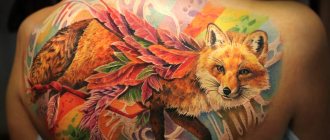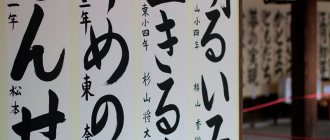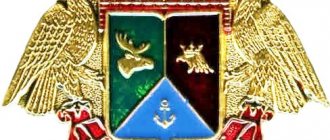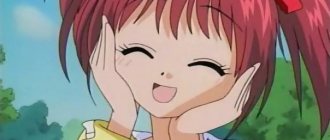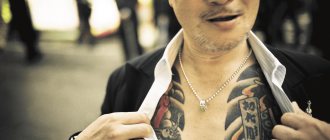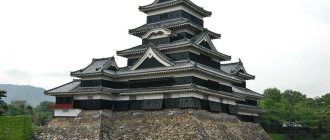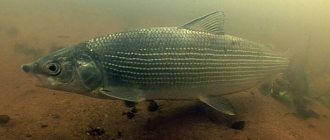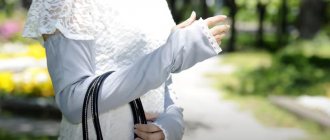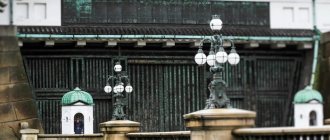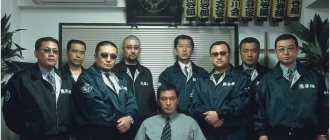Each person is a bright individual and uses a lot of different ways to emphasize his self-sufficiency, unique style and his relationship to society. One of them is the pricking of drawings, patterns, figures or words on different parts of the body by introducing a dye substance under the skin. This method is called tattooing, also called “tattoo” or “tattoo”. Tattoos are usually used by young people from informal youth movements, as well as certain social groups or associations of people. Therefore, in this article we will talk about the meaning of dragon tattoos. A tattoo can be small in size, elegant and sophisticated, applied to the most hidden areas from view, or massive and noticeable, applied to open areas of the body. In any case, the tattoo carries a certain meaning, thus emphasizing the message that its owner is trying to convey to the reality around him.
Dragon Tattoo: Symbol of Power and Strength
One of the most popular tattoos is considered to be the dragon tattoo, the meaning it carries: majesty, pride and invincibility. Its mythological image is present in almost all cultures of the world, especially in the regions of East and Southeast Asia. A tattoo with his image is rightly considered a symbol of remarkable strength and power, personifies at the same time all natural, so bright and opposing, elements (fire and water, air and earth), and also represents a connection of the four cardinal directions (north and south, western and eastern ). These contradictions contained in him contributed to the fact that his image was perceived ambiguously by people over the centuries. For example, both the evil, bloodthirsty and fire-breathing Serpent Gorynych, a fictional fairy-tale creature known to us all since childhood, as well as the greedy dragon defeated by the legendary St. George the Victorious, and a reliable, faithful companion and protector of the deity Buddha.
The dragon is the embodiment of:
- indestructible power;
- brutal belligerence;
- unprecedented perseverance;
- masculine beauty;
- innate nobility;
- mystery;
- of magic;
- wisdom;
- leadership;
- strong and lasting power.
The owner of a dragon tattoo undoubtedly positions himself as a person with a strong, noble character, having power and showing wisdom.
Dragon in four zodiac signs
Statue of an azure dragon at Kiyomizu Temple in Kyoto (formerly Heian-kyo)
In both Chinese and Japanese mythologies, the dragon is one of the four guardians of geographical directions[10].
The scarlet bird Suzaku (Japanese 朱雀) patronizes the south, the azure dragon Seiryu (Japanese 青龍seiryu:
) to the east, the black turtle Gembu (Japanese 玄武) to the north, the white tiger Byakko (Japanese 白虎) to the west [10].
One of the earliest (VII-VIII centuries) images of an azure dragon in Japan is found on the inner walls of the Kitora (English) and Takamatsuzuka (English) mounds[11].
During the Heian era, the dragon Seiryu was believed to protect Heian-kyo[12], the capital of the state, from the east. According to the teachings of onmyodo
, Seiryu's dragon is associated with flowing water. This means that if the city is laid out in such a way that there is a river on the eastern side, then the azure serpent will certainly reveal itself as the defender of the settlement. The capital of Japan at that time fell under this criterion - to the east of the city was the Kamo River. However, it is very likely that this criterion was invented after the successful completion of the city[13].
The dragon has a complex system of relationships with the scarlet bird. So, despite the fact that Seiryu and Suzaku are considered rivals, they can often be seen together on pieces of fine art. In addition, both creatures represent the element. The rivalry between these two guardians is expressed in the fact that the azure dragon represents the element of wood, while the scarlet bird is associated with the element of fire. Even though Ian
is associated with the masculine principle, the only representative of the masculine gender is the dragon Seiryu, when the Suzaku bird corresponds to the feminine. Thus, they are both rivals and a married couple[1].
No less often, a tiger is depicted together with a dragon. This motif is called ryuko
(Japanese: 龍虎
ryūko
, “dragon and tiger” / idiom: “two mighty rivals”).
sumi-e
ink painting .
In addition, a dragon and a tiger could often be seen on byobu screens and
fusuma sliding walls
in
Zen temples of the Muromachi period[14].
Dragon tattoo meaning: a look into the depths of centuries
If you decide to put a dragon tattoo on your body, the meaning of such an image should be sought in the mists of time. After all, these fantastic creatures are glorified in many myths. However, even in fairy tales and fantasy stories of modern writers they occupy a worthy place. Just look at the already legendary cycle “A Song of Ice and Fire” by J. Martin.
Note! There is an opinion that dragons “settled” in myths during the development of agriculture. While cultivating the land many centuries ago, peasants found the remains of dinosaurs. Of course, they did not know who the skeletons actually belonged to, but they could assume that they were huge creatures. Human imagination did its job - so people began to talk about dragons.
To understand what a dragon tattoo can mean in one part of the world or another, we’ll tell you how these creatures were treated in different countries.
Famous Japanese dragons
Ryujin
Katase-enoshima Station, designed as a gateway to the Ryūjin Palace
Main article: Ryūjin
It is believed that Ryujin (Japanese 龍神Ryu: jin
, "dragon god") is one of the divine ancestors of the Japanese imperial house. Most often associated with the water element. He has his own underwater palace of white and red corals, which is full of treasures and guarded by other dragons. Fish and other underwater animals serve the dragon god as vassals. The tortoise, Gembu, is considered to be Ryujin's messenger. Sometimes the daughter of the snake, Princess Toyotama-hime[1], acts as a turtle.
Ryujin appears in many stories, for example in the tale of Urashima Taro, the tale of the conquest of Korea by Empress Jingu, stories about the famous Japanese monk Kukai and many others[1].
There is a special set of beliefs called Ryujin Shinko
(Japanese: 龍神信仰
Ryu:jin shinko:,
“faith in the dragon god”).
Ryūjin Shinko
practices typically involve prayers to Ryūjin for rain, calm seas, or abundant catch[20].
Yamata no Orochi
Main article: Yamata no Orochi
The eight-tailed and eight-headed serpent from the Nihon Shoki
and
Kojiki.
According to mythological accounts, the dragon terrorized the consort deities Ashinazuchi and Tenazuchi, who were supposed to sacrifice their daughters to him. The god Susanoo no Mikoto came to the aid of the deities - by deception, he greatly intoxicated the serpent and cut him into pieces[21].
Dragon of the Hojo family
Kamon of the House of Hojo - Mitsu-uroko
(三つ鱗, "Three Dragon Scales")
According to legend, the famous statesman Hojo Tokimasa went to Enoshima Island to find a dragon. Having found the serpent in the cave, he prayed for the well-being of Hojo's house. As a sign of promise, the dragon left three of its scales, which later began to be depicted on the coat of arms of the Hojo family[1].
Eight Great Dragon Kings
Kurikara wraps around the kurikaraken
. Exhibit of the Nara National Museum
Eight Great Dragon Kings (Japanese: 八大竜王hachidai ryū:o:
) - serpents of Buddhist origin.
First found in the Lotus Sutra. Like many other dragons of Japanese mythology, they live at the bottom of the ocean. According to the Sea Dragon King Sutra (Japanese 海龍王経kairyu o kyo
), dragon kings are often eaten by the Karura bird-men, their blood enemies. Often, instead of the entire eight kings, there is one dragon, who is called Nanda (. 難陀)[1].
Kurikara
Kurikara (Japanese: 倶利迦羅) is a dragon of Buddhist origin. Sometimes ranked among the Eight Dragon Kings. In the Tendai and Shingon schools of esoteric Buddhism, Kurikara is considered a hypostasis of the deity Fudo-myo. Most often depicted as a flame-covered dragon (sometimes a snake) coiled around a straight-bladed sword. The serpent's mouth is open so that it is ready to swallow the entire weapon. A sword entwined with a serpent is called kurikara-ken
(Japanese 倶利迦羅剣, “Kurikara sword”)[1]. There are several mythological explanations for this unusual image of the serpent. One says that Kurikara himself is the rope held by Fudo-myo in his left hand, and the double-edged sword is actually that deity's weapon, which he usually holds in his right hand. According to another version of the legend, Fudo-myo argued with a certain opponent of the teachings of the Buddha. The deity's opponent turned into a sword when Fudo himself turned into a dragon and attacked the weapon. Having successfully grabbed and immobilized, he began to devour his opponent - thereby proving the superiority of the Buddha’s teachings[22].
Dragon Goddess Benzaiten
The goddess Benzaiten is often depicted riding a dragon[23]. In the record of the temples of Enoshima Island, which is known as Enoshima engi
(English)[1], there is a story about this goddess and her meeting with a dragon who devoured the children of the village of Koshigoe (English)[24]. Benzaiten decided to stop the atrocities of the serpent. First she found the cave in which he lived, and then created an earthquake there. Benzaiten then descended from heaven to the dragon and married him. Having had a good influence on the serpent, she changed his evil disposition to a benevolent one - the dragon no longer wanted to devour children[25].
Dragon tattoo meaning in China
In this country, the dragon is still almost a deity. According to the Chinese, he is not just huge and strong, but also has a number of abilities:
- he can control the weather;
- all four elements are subject to him - water, earth, fire and air;
- he is the ruler of all 4 cardinal directions.
The Chinese also claim that the dragon is capable of reincarnation. For example, this creature is capable of taking on the appearance of a person or even the entire Universe.
Native Japanese dragons[edit]
Kiyohime
transforms
from a dragon
into a human woman, Yoshitoshi Tsukioka Daughter of the Dragon King, whose father the Dragon King lives at the bottom of the sea. Author: Utagawa Kuniyoshi
C. 680 AD Kojiki
and ok.
720 AD Nihongi
mythological stories contain the first textual references to dragons in Japanese.
“In the oldest annals, dragons are mentioned in various ways,” explains de Visser [1], “but mainly as water gods, snakes or dragons.” The Kojiki
and
Nihongi
mention a few ancient dragons:
- Yamata no Orochi
八岐大蛇 "8-branched giant snake" is an eight-headed, eight-tailed dragon killed by the wind and sea god Susanoo, who discovered
the Kusanagi no Tsurugi
(the legendary sword of the Imperial Regalia of Japan) in one of its tails. - Watatsumi
"sea god" or
Ryujin
龍神 "dragon god" was the ruler of the seas and oceans and was described as a dragon capable of taking human form.
He lived in the underwater Ryugu-jō
龍宮城, the "dragon palace castle", where he kept the magical tide jewels. - Toyotama-hime
豊玉姫 "Princess of Luminous Pearl" was the daughter of Ryūjin. She was purportedly the ancestress of Emperor Jimmu, the legendary first emperor of Japan. - Wani
鰐 was a sea monster, which translates to "shark" and "crocodile".
Kuma-
wani 熊鰐 "bear (i.e. giant or strong) shark/crocodile" is mentioned in two ancient legends.
One says that the sea god Kotoshiro-nushi-no-kami turned into the
eight-fathom kuma-wani" and became the father of Toyotama-hime, another says that
the kuma-wani
piloted the ships of Emperor Chuai and his empress Jingu. - Mizuchi
蛟 or 虯 was a river dragon and water deity.
The Nihongi
records how the legendary Emperor Nintoku made human sacrifices
to Mizuchi,
who was angered by his river construction projects. - Raiju
is Raijin's animal companion and messenger
,
which usually takes the form of a dragon.
- Kiyohime
清姫 "Princess of Purity" was a waitress at a tea house who fell in love with a young Buddhist priest. After he rejected her, she studied magic, turned into a dragon and killed him. - Nure-onna
濡女 "Wet Woman" was a dragon with the head of a woman and the body of a snake. She was usually seen washing her hair on the banks of the river, and sometimes she killed people when she was angry. - Zennyo Ryuo
善如龍王 "virtuous dragon king" was a rain god, depicted as either a dragon with a snake on his head or a man with a snake's tail. - In the tale "My Lord Bag of Rice", Ryuo, the "dragon king" of Lake Biwa, asks the hero Tawara Toda 田原藤太 to kill a giant centipede.
- Urashima Taro saved the turtle, who took him to Ryugu-jo and turned him into the attractive daughter of the ocean god Ryujin.
What does a dragon tattoo mean in Japan?
Dragon tattoos are popular in Japan. However, there is no need to be surprised. After all, in this country the creature personifies:
- good luck;
- wisdom of the ages;
- incredible strength.
By the way! One of the most popular Japanese legends says that the Koi carp, symbolizing courage and good luck, was able to turn into a dragon after a series of trials that befell it.
In general, in Eastern culture the Dragon is very common. Among other qualities, he is credited with protection. Therefore, it was often applied to the body by firefighters. Modern Japanese women get dragon tattoos; the meaning of this creature for them is family protection. Photos of dragon tattoos presented on our website make it clear that this mythological creature can have a completely different appearance. This is due to different cultures - each of them implies its own meaning of such a pattern. For example, in European countries (including our country), the dragon was often perceived as a negative character. Which only a brave and strong knight or hero could defeat.
The European dragon has its own characteristics in contrast to the Asian dragon:
- he has a more massive body;
- huge wings;
- a long tail;
- but there is no beard or horns, which are found in Asian dragons.
Dragon in Japanese mythology
In Japan, Korea and China, dragons were considered one of the main mythological heroes. Citizens of these countries firmly believe that once upon a time these creatures really lived side by side with people. And although today it is simply the main character of national myths, previously dragons were truly treated as powerful deities and sacredly believed in their existence.
People believed that they were smart, wise, noble and had an endless supply of energy. Do you know how to determine that this is a Japanese dragon, and not a Slavic, Korean or some other one? Everything is extremely simple. Look at the number of his fingers.
If you believe Japanese mythology, the first such entity appeared, of course, in Japan and had only 3 fingers on its paws. However, not all entities decided to stay in Japan and began to explore the world.
As they moved further away from home, they began to grow new fingers. And all because most of the eastern monsters did not have wings and they could move either on foot or by swimming. It was much easier to do this with more fingers.
The traditional character from Japan has horns, claws, scales, and large teeth on his back. The creature is often depicted with a burning sphere in its mouth, which it consumes or spews out. Often a famous pearl is depicted, in which all the power of the creature is accumulated.
If we talk about the gender of eastern creatures, then it is very easy to determine. First of all, look at the shape of the tip of the tail. If you see a lush fan, then it is a female. If the monster has an elongated muzzle and a wavy mane, this also indicates that it is a female. A sharp tail or with a club at the end speaks of the male gender of the entity. He uses similar weapons in battle.
The Japanese believe that the entity is the personification of power, limitless absolute power that is capable of creating and destroying. If these mythological creatures are treated with respect, they can reward a person. If you insult the dragon, he will definitely take revenge on the offender and will never forget him.
A place where dragons are treated with special respect is Kanagawa Prefecture. The two most popular creatures are found there: one is five-headed on Enoshima Island. The second, nine-headed one is in Lake Ashinoko. The first records of dragons appeared in local chronicles in 720 BC.
Photo of a dragon tattoo: elegance and danger
Often in European culture, the dragon was depicted with a sword or cross.
Note! But the British red dragon is considered a good creature. It has been established that this creature was “assigned” a negative characteristic after the spread of Christianity.
You can't ignore the legends of the Celts. According to them, this fantastic creature is distinguished by deep wisdom. He had the head of a ram, but he is a servant of the earth god. The Celts said that the dragon has the following characteristics:
- spirituality;
- power;
- dominance;
- power.
The mythical creature was of particular importance in the legends of the ancient Aztecs. He was one of the gods. Outwardly, it is similar to dragons depicted in Asian countries, only it had one significant difference - its body is covered with feathers. The Indians claimed that if you look directly into the eyes of a dragon, you can fall under the influence of its hypnotic powers.
Dragon Shrines[edit]
Japanese Dragon Temple in Fujiyoshida.
Japanese dragons are primarily associated with Shinto shrines, as well as some Buddhist temples.
Itsukushima Shrine on Miyajima or Itsukushima Island in the Japanese Inland Sea was believed to be the abode of the daughter of the sea god Ryujin. According to Gukansho
and
The Tale of the Heike
(Heinrich 1997: 74–75), the sea dragon authorized Emperor Antoku to ascend the throne because his father Taira no Kiyomori had offered prayers at Itsukushima and declared it his ancestral shrine.
When Antoku drowned after being defeated at the 1185 Battle of Dan-no-ura, he lost the imperial sword Kusanagi (which legend has it came from the tail of the Yamata no Orochi
dragon) back into the sea. According to another version, the sword was found by divers and is said to be kept in the Atsuta Shrine. The Great Earthquake of 1185 was attributed to the vengeful spirits of the Heike, particularly the forces of the Antoku dragons.
Ryujin shinkō
竜神信仰 "belief in the dragon god" is a form of Shinto religious belief that worships dragons as water
kami
.
It is associated with agricultural rituals, rain prayers, and fisherman's success[ edit
].
Dragon tattoo on the arm: a style that is always in fashion
Dragon tattoo meaning: colors and design features
A dragon tattoo on the arm can mean almost anything. Important features for determining the meaning of such a pattern are its coloring and certain features. Look at the dragon tattoo designs presented on our website. All drawings amaze with their unusual and bright colors. Each shade, color has its own characteristics:
- black - talk about respect;
- blue – indicates the desire for eternal life, compassion for others;
- yellow - not used very often, symbolizes war, conquest;
- red is strength, health, love, passion;
- green - indicates that the person with a dragon on his body has strong ties to the earth;
- gold - symbolizes deep wisdom.
The influence of the color of the dragon on the meaning of the tattoo
Depending on the color, dragons can have different meanings.
- The yellow Chinese dragon is the most common design among tattoo lovers. These creatures are highly valued in the Middle Kingdom because they represent the emperor and his family. Yellow is associated with strength, reliability and warmth, and also indicates power and high social status.
- Golden dragons have a similar meaning, but also symbolize wealth, prosperity, wisdom and compassion.
- The red dragon is a symbol of passion.
- Black and white are key colors in China as they represent the balance of Yin and Yang. Among the tattoo designs you can find a lot of variations on this theme.
- The black dragon signifies respect and wisdom.
- Blue and green dragons in the East are associated with nature, health and tranquility.
Dragon tattoo designs: the most popular and unusual designs
To understand what meaning a dragon tattoo has, you must take into account the features of the design:
- mouth with a grin, spread wings, huge nails - aggression, desire for leadership, power;
- if the wings are pressed to the body or lowered, the mouth is not open - this indicates wisdom;
- a dragon resting calmly - internal balance;
- rushes upward, including in flight - striving for heights, openness to the world;
- rushes down, including in flight - speaks of hidden aggression, warns of a possible attack.
Note! Quite often, a dragon tattoo on the back is depicted in a composition with a tiger. If they are located at the same level and have approximately the same size, this indicates the internal balance of a person, the harmony of his inner world. If in the picture a lizard fights with a tiger and defeats it, this speaks of the victory of good over evil. If the tiger wins, the tattoo symbolizes aggressiveness.
Dragon tattoo on the back: beautiful and voluminous tattoos
Among the most common images is a dragon soaring in the sky, shrouded in clouds. This sketch says that the person has a rather strong position, he is determined to strive to achieve his goals. Such designs are preferred by those who are confident in themselves and their goals - a tattoo helps them strengthen their self-confidence. If you are interested in dragon tattoo designs for men, then it is better to choose something that is not too bright or multi-colored, but to give preference to certain colors. Using a large number of bright colors is the prerogative of girls. Although this is not an axiom, but rather an established rule, to which there are always exceptions.
Indo-Japanese dragons[edit]
When Buddhist monks from other parts of Asia brought their faith to Japan, they passed on legends of dragons and snakes from Buddhist and Hindu mythology. The most prominent examples are the naga
ナーガ or 龍 "Naga;
rain deity; protector of Buddhism" and nagaraja
ナーガラージャ or" Nagaraja; snake king; king of dragons." de Visser (1913: 179) notes that many Japanese naga legends have Chinese features. “This is quite clear, since all Indian tales came to Japan through China. Moreover, many originally Japanese dragons, to which the Chinese legends belonged, subsequently were identified with the Nagas, so that a confusion of ideas arose as a result.
Some additional examples of Buddhist Japanese dragons:
- Hachidai ryūō 八大
龍王 "8 great naga kings" gathered to listen to
the Buddha's
interpretation of the Lotus Sutra
is a common artistic motif. - Muharinda
ムチャリンダ "Mukalinda" was a Naga king who protected the Buddha when he achieved bodhi, and was often depicted as a giant cobra. - Benzaiten弁才天 is the Japanese name of the goddess Saraswati, who killed the three-headed serpent or dragon Vritra in the Rigveda
.
According to Enoshima Engi
, Benzaiten created the island of Enoshima in 552 AD to thwart a five-headed dragon that was persecuting people. - Kuzuryu 九頭龍 "9-headed dragon", derived from the multi-headed naga king シェーシャ or 舍沙 "Shesha", is revered at the Togakushi Shrine in Nagano Prefecture.
Dragon tattoos for men: 12 best tattoos
What part of the body is best to get a dragon tattoo?
Above, we looked in detail at what a dragon tattoo means in different cultures and in different types. Now let's talk about which parts of the body this image will look best on.
So, the lizard is great for impaling on:
- hand;
- back;
- hip;
- spatula;
- shoulder.
Note! Do not think that the size of such a tattoo must be huge. In fact, it all depends on your personal wishes. If you like, then let it be even a miniature tattoo in the intimate area.
However, most often the mythical creature is impaled on the back. Especially if it is a Japanese-style sketch. The large area allows you to draw literally every detail of the dragon and create a full-fledged plot. In addition, the back does not change so much with age, and therefore even after many years the dragon will look quite presentable. A dragon tattoo on the shoulder is also a good option. Especially if it gradually “flows” from the shoulder to another part of the body. Placing a tattoo on the lower part of the leg would not be the best option. Since space is limited there, it will be very difficult to pin a beautiful sketch. In addition, the features of the leg relief below also have an effect.
Etymology
It is believed that the Japanese word ryu
(Japanese 竜, 龍
ryu:,
dragon) comes from one of the names of the Okinawan archipelago - Ryukyu (Japanese 琉球).
According to tradition, the palace of the Japanese dragon god (Japanese 竜神ryu:jin
) is located somewhere underwater near the Ryukyus Islands.
The palace itself is called Ryugyu
(Japanese: 竜宮
ryu:gyu
:), which is very similar to the name of the archipelago. It is worth considering that in Okinawa there are many more motifs depicting dragons in painting and architecture than in China and the rest of Japan. It is possible that this influenced the association of the Ryukyu Islands with dragons[26].
Dragon tattoo on the shoulder: tattoos that will be in trend
Note! If you still decide to tattoo a lizard on your foot or calf, the best option would be a sketch in a Chinese theme. This style implies thin lines, and the office itself is not painted over with pigment too tightly. Therefore, the drawing will look like a beautiful sketch.
Another great tattoo option is the lower back. In this case, it is better to depict a flying serpent. A small, colorful sketch is perfect for:
- shoulder blades;
- wrists;
- or neck.
When choosing a place for a dragon tattoo, be sure to take into account your lifestyle and social status. You may not always be able to appear everywhere with an open tattoo. In this case, choose a place to apply it so that the design can always be hidden under clothing.
Dragon tattoo meaning: from peace to aggression
A dragon tattoo often looks unusually bright, beautiful, and juicy. The best option for its execution is a three-dimensional drawing. Then the master will be able to draw the dragon as accurately as possible, with a lot of detail. But you need to understand that ideally the dragon should be large and occupy a significant part of the body. However, this option is not suitable for everyone. Perhaps in your case you need to limit yourself to a small pattern on the shoulder. If there are no restrictions, proceed to choosing options for the sketch and its colors. Use our service and contact the master - he will prepare for you a unique, unparalleled sketch.
Sino-Japanese dragons[edit]
The mythology of the Chinese dragon is central to the history of Japanese dragons. The Japanese words for "dragon" are written in kanji
("Chinese characters"), either simplified
shinjitai
竜 or traditional
kyūjitai
龍 from Chinese
long
.
These characters
can be read as
tatsu
in Japanese
kun'yomi
and
ryu
or
ryu
in Sino-Japanese
on'yomi
.
Many Japanese dragon names are borrowed from Chinese. For example, the Japanese equivalents of the four astrological symbols are:
- Seiryu
<
Qinglong
青龍 "Azure Dragon" - Suzaku
<
Zhuque
朱雀 "red bird" - Byakko
<
Baihu
白虎 » White Tiger » - Genbu
<
Xuanwu
玄武 » Black Turtle »
Japanese Shiryū
四竜 "4 Dragon [Kings]" are the legendary Chinese
Longwang 龍王
"Dragon Kings" who rule the four seas.
- Gk
<
Aoguang
敖廣 » Dragon King of the Eastern Sea » - Guqing
<
Aoqing
敖欽 "Dragon King of the Southern Sea" - Goujun
<
Aorun
敖閏 "Dragon King of the Western Sea" - Goujun
<
Aoshun
敖順 "North Sea Dragon King"
Some authors distinguish between Japanese ryu
and Chinese
long
dragons based on the number of claws on their feet. “In Japan,” writes Gould (1896: 248), “it is invariably represented as having three claws, while in China it has four or five, depending on whether it is a common or imperial coat of arms.”
During World War II, the Japanese military named many weapons after Chinese dragons. Koryu
蛟竜<
jiaolong
蛟龍“dragon flood” was a midget submarine and
Shinryu
神竜<
Shenlong
神龍“dragon spirit” was a missile-kamikaze aircraft. The Imperial Japanese Army division, the 56th Division, was codenamed the Dragon Division. Coincidentally, the Dragon Division was destroyed in the Chinese city of Longling (龍陵), whose name means "Dragon's Tomb".
